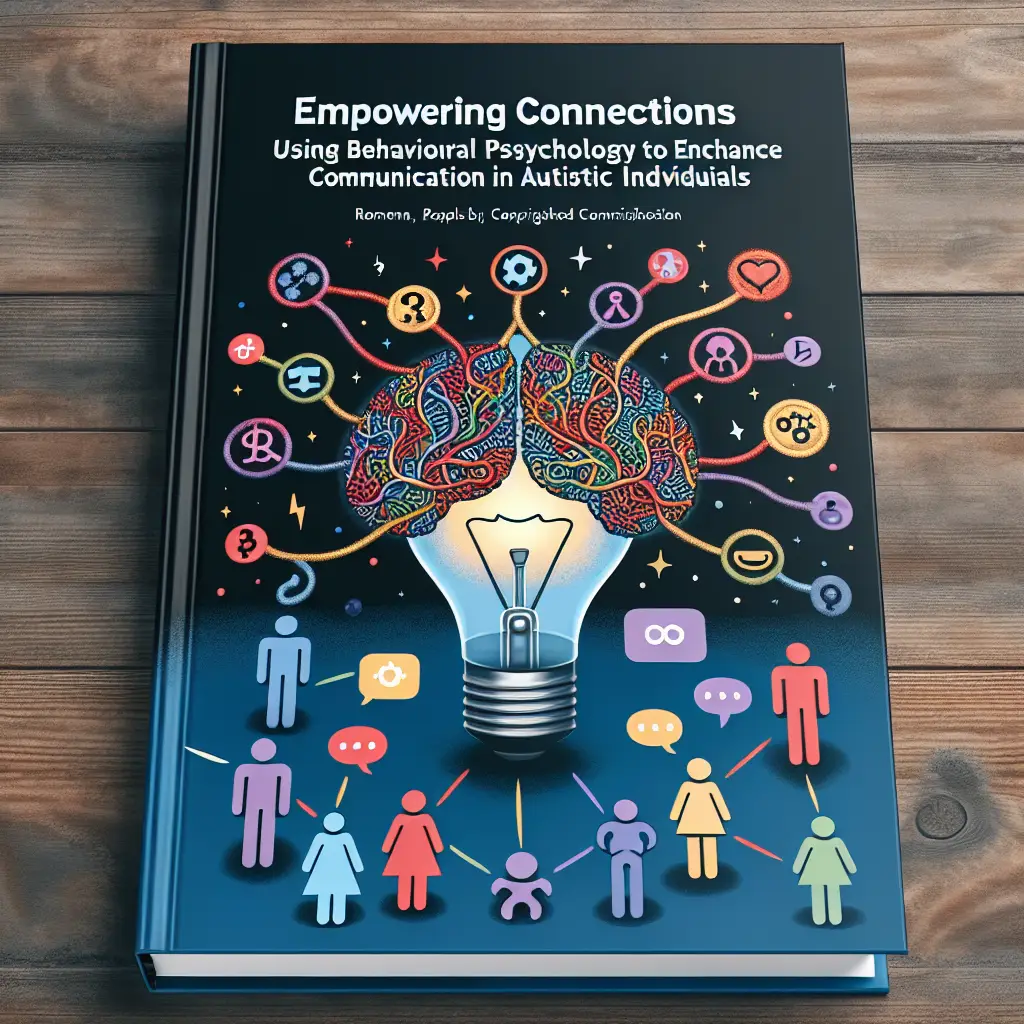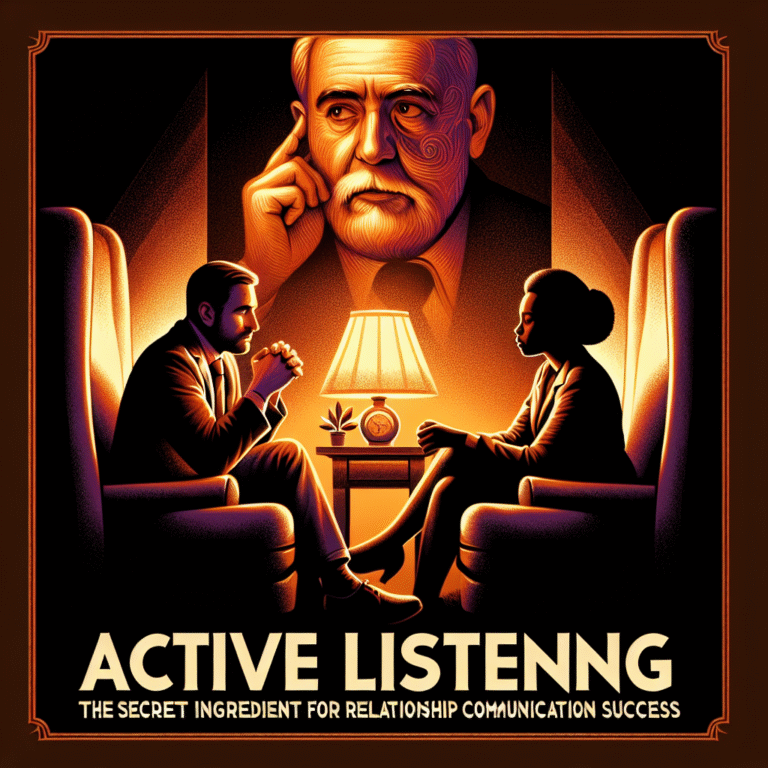
Empowering Connections: Using Behavioral Psychology to Enhance Communication in Autistic Individuals
Introduction
In a world that thrives on communication, the ability to connect with others is paramount. For individuals on the autism spectrum, barriers to effective communication can create challenges that affect every aspect of life—from education and employment to personal relationships. Yet, recent advancements in behavioral psychology have opened new avenues for empowering these individuals to express themselves more freely and build meaningful connections. This article explores how the principles of behavioral psychology can be harnessed to enhance communication in autistic individuals, creating lasting, impactful connections.
Understanding Autism and Communication Challenges
The Spectrum of Autism
Autism Spectrum Disorder (ASD) is characterized by a wide range of challenges, particularly in social interaction and communication. According to the Centers for Disease Control and Prevention (CDC), approximately 1 in 54 children is diagnosed with autism, indicating a growing need for effective communication strategies. Each individual on the spectrum can exhibit unique characteristics, leading to diverse communication styles and preferences.
Common Communication Barriers
Individuals with autism may face various communication barriers, including:
- Non-verbal communication difficulties: Many individuals struggle to interpret gestures, facial expressions, and body language.
- Limited verbal skills: Some may have delayed speech production or may communicate using a limited vocabulary.
- Social cues misunderstanding: Challenges in understanding the nuances of conversation, such as sarcasm or idioms, can lead to miscommunication.
Understanding these barriers is crucial for developing strategies focused on Empowering Connections: Using Behavioral Psychology to Enhance Communication in Autistic Individuals.
The Role of Behavioral Psychology
Foundations of Behavioral Psychology
Behavioral psychology focuses on understanding and modifying human behavior through observation and reinforcement. By analyzing interaction patterns, we can devise tailored strategies to improve communication for individuals with autism. Behavioral principles, such as positive reinforcement, can encourage desired communication behaviors and subsequently facilitate social interactions.
Techniques for Enhancing Communication
Several behavioral psychology techniques stand out in their effectiveness:
- Applied Behavior Analysis (ABA): This widely-used method employs reinforcement and modeling to enhance communication skills.
- Natural Language Acquisition (NLA): This focuses on teaching communication within the context of natural events and environments.
- Social Skills Training: Programs that emphasize role-playing and peer interactions can help autistic individuals develop social competencies.
Case Studies Demonstrating Effective Strategies
Case Study 1: Utilizing ABA Techniques
Background: Sarah, a 6-year-old with autism, exhibited limited verbal communication and had difficulty expressing her needs.
Intervention: Using ABA techniques, her therapists created a structured program incorporating verbal prompts and reinforcement. Each time Sarah successfully identified her needs verbally, she received praise and a small reward.
Outcome: Within four months, Sarah began using simple sentences to express her desires effectively. This case underscores how Empowering Connections: Using Behavioral Psychology to Enhance Communication in Autistic Individuals can be made tangible through systematic application.
Case Study 2: Implementing NLA Principles
Background: James, an 8-year-old who communicated primarily through gestures, had challenges vocalizing his needs during playtime.
Intervention: Therapists introduced the NLA approach, encouraging communication through play scenarios. Interactive play encouraged spontaneous verbalization, linking desires with words.
Outcome: James demonstrated significant improvement in speech, often expressing what he wanted without prompting. This case illustrates the effectiveness of creating a comfortable environment as part of Empowering Connections: Using Behavioral Psychology to Enhance Communication in Autistic Individuals.
Case Study 3: Social Skills Training Program
Background: Lucas, a teenager on the spectrum, struggled with initiating conversations and understanding social cues with peers.
Intervention: A social skills training program was introduced, focusing on role-playing common social scenarios and practicing conversational skills.
Outcome: Lucas showed marked improvement in his ability to initiate and maintain conversations. His interactions with peers increased, demonstrating the power of direct application of behavioral psychology principles.
Enhancing Communication Through Technology
Digital Platforms and Communication Aids
Technology has revolutionized how individuals with autism can communicate. Augmentative and alternative communication (AAC) tools, such as speech-generating devices or smartphone applications, provide essential support.
Table 1: Examples of Communication Aids
| Tool/Technology | Description | Use Cases |
|---|---|---|
| Speech-Generating Devices | Electronic devices that produce speech when pictures or text are input. | Assisting non-verbal individuals in communication. |
| AAC Apps | Mobile applications designed to facilitate communication via symbols, pictures, or text. | Ideal for on-the-go communication needs. |
| Visual Schedule Tools | Apps that allow the creation of visual schedules to aid in understanding daily activities. | Helping individuals predict and understand routines. |
These technological tools are integral to Empowering Connections: Using Behavioral Psychology to Enhance Communication in Autistic Individuals by providing alternative means of expression.
Strategies for Parents and Caregivers
Creating a Supportive Environment
To foster effective communication, it is essential that parents and caregivers establish supportive environments. This can include:
- Active Listening: Engaging with individuals by reflecting on their communication efforts encourages further interaction.
- Routine and Structure: Implementing consistent daily routines can reduce anxiety and confusion, making communication more predictable.
- Visual Supports: Utilizing visual aids, such as charts and pictures, can help clarify concepts and facilitate communication.
Training and Resources for Caregivers
Educating caregivers on behavioral psychology can significantly enhance their ability to communicate effectively with autistic individuals. Workshops and resource materials can provide insights into the tools and strategies necessary for fostering communication.
The Importance of Collaboration Across Disciplines
Interdisciplinary Approaches
Collaboration among educators, therapists, and medical professionals can create a cohesive approach to enhancing communication. By integrating methodologies from various disciplines, the principles of Empowering Connections: Using Behavioral Psychology to Enhance Communication in Autistic Individuals can be applied more effectively.
Chart 1: Benefits of Collaborative Approaches
| Discipline | Contribution | Benefit to Communication Enhancement |
|---|---|---|
| Education | Specialized teaching strategies | Tailored engagement in learning environments. |
| Therapy | Targeted interventions using behavioral principles | Individualized support for communication skill development. |
| Medicine | Medical assessments and recommendations | Understanding health-related factors affecting communication. |
Conclusion
The intersection of behavioral psychology and autism offers a promising pathway to empower individuals on the spectrum. By employing techniques rooted in behavioral principles, we can enhance communication skills, foster connections, and enrich the lives of autistic individuals. It’s essential for professionals, families, and communities to join forces in this endeavor to create an inclusive and understanding society.
As we continue to explore innovative strategies within Empowering Connections: Using Behavioral Psychology to Enhance Communication in Autistic Individuals, we must remain committed to cultivating environments that celebrate and support diverse communication styles. Together, we can break down barriers and build a world where every voice is heard.
FAQs
1. What is ABA and how does it help individuals with autism?
ABA, or Applied Behavior Analysis, is a therapeutic approach that focuses on improving specific behaviors while incorporating reinforcement and modeling. This method is effective in teaching communication skills to individuals with autism by breaking down tasks into manageable steps.
2. Can technology really enhance communication for autistic individuals?
Yes, technology such as AAC (Augmentative and Alternatative Communication) devices and apps provide essential tools that enable individuals to express themselves. These technologies can be critical in bridging communication gaps.
3. How can parents support their autistic child’s communication skills?
Parents can create supportive environments by using active listening, incorporating routine and structure, and utilizing visual supports. Engaging with their child’s communication efforts encourages further attempts to express themselves.
4. What role does social skills training play in communication for autistic individuals?
Social skills training consists of structured programs that teach individuals how to interact with others effectively. Skills such as understanding social cues, initiating conversations, and maintaining dialogues are emphasized, enabling more profound connections.
5. Are collaborative approaches necessary for improving communication in autistic individuals?
Absolutely! Collaboration among educators, therapists, and medical professionals ensures a cohesive strategy for enhancing communication. By sharing insights and resources, we can better support individual needs.
Empowering Connections: Using Behavioral Psychology to Enhance Communication in Autistic Individuals is not just a framework but a movement toward understanding, inclusion, and the celebration of each individual’s unique communication style. Together, we can create a future where every voice resonates loudly and clearly.
















